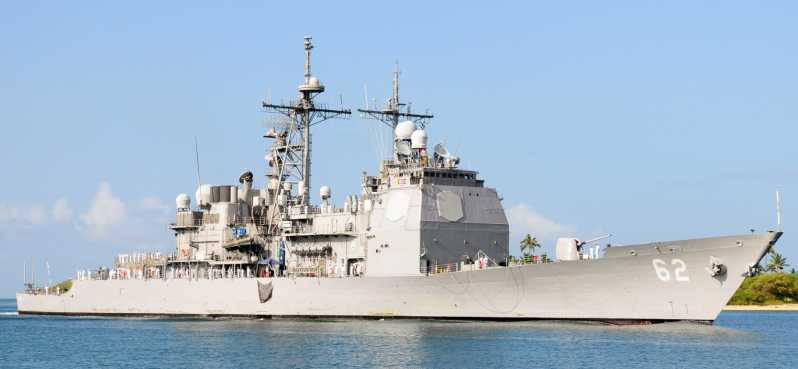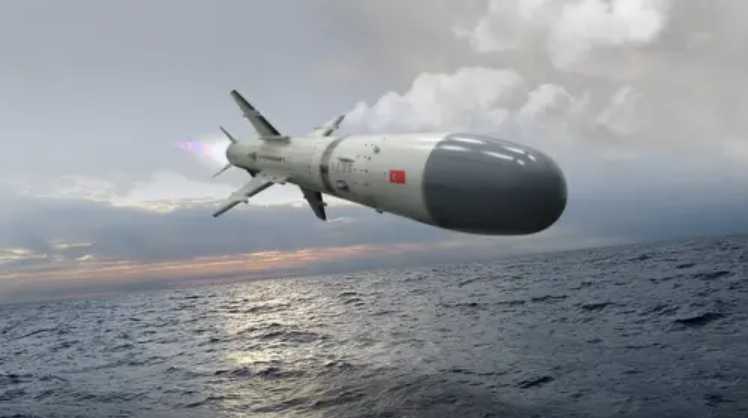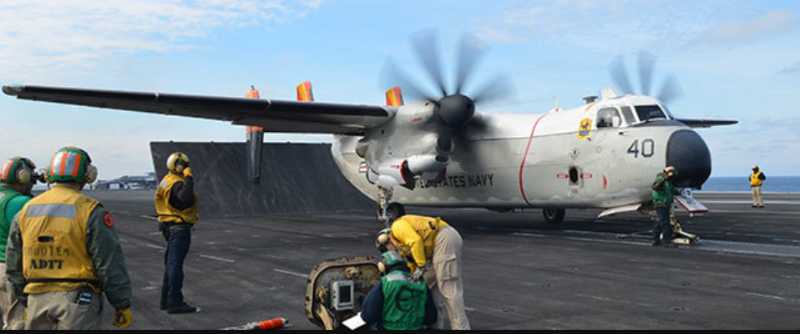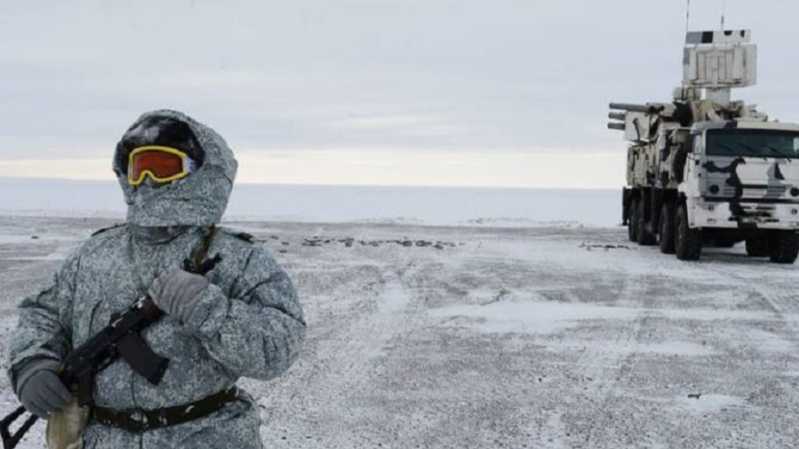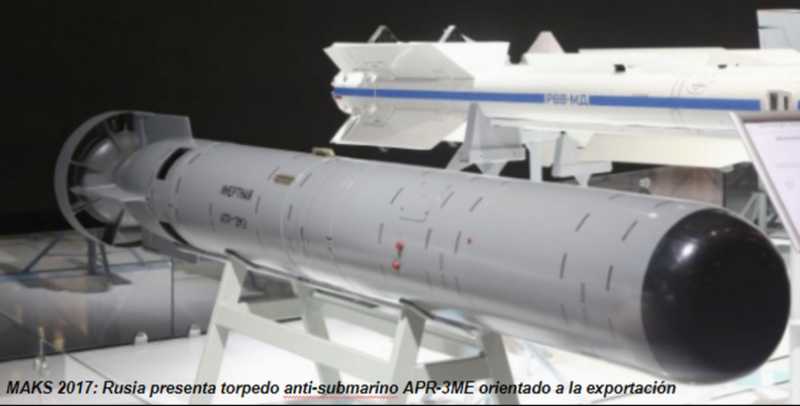Navy test ships are test platforms used by navies of various countries to test new ship configurations, new concept monitoring platforms, or new naval weapons and equipment and related technologies. In order to test new platforms and new technologies, navies of various countries have developed and modified various test ships. This article will introduce several typical and distinctive foreign naval test ships.
US Navy self-defense system test ship
Self-defense test ships, as the name suggests, are test ships for testing the self-defense system of ships. Self-defense test ships are currently unique to the US Navy. Their mission is to support various engineering, testing and evaluation work of self-defense systems. Self-defense test ships are retired ships. Retired ships selected as self-defense test ships must be modified to become remote-controlled ships. The modified self-defense test ships can be used with confidence, unlike manned test ships, which have problems such as personnel safety.
Generally, during the test, the driving and combat systems of the self-defense test ship are remotely controlled. The self-defense system that the U.S. Navy self-defense test ship is going to test is called the Ship Self-Defense System (SSDS). The U.S. Navy believes that the main air threat facing its surface ships is high-performance anti-ship cruise missiles (SCM). Its amphibious warships and aircraft carriers are equipped with radars and air defense weapons that can help self-defense. However, when fighting against anti-ship cruise missiles, it still requires a lot of manual intervention to complete target detection. The purpose of developing a ship self-defense system is to improve the reaction speed of the ship. The ship self-defense system is mainly used on aircraft carriers and amphibious ships, enabling these ships to defend against the increasingly deadly threat of anti-ship cruise missiles. This is a distributed processing system with an open architecture, which is an integrated system of independent detection and engagement units in the ship combat system. Through automated weapon control commands, collaborative combat capability (CEC) and improved combat space perception, the ship self-defense system will enable ships equipped with the system to have strong self-defense capabilities. The MK1 type of the ship self-defense system has been tested on the "Dequette" and completed combat tests in 1997. It was approved for mass production and formed initial combat capabilities that year. Subsequent tests and evaluations were carried out in fiscal year 1999. This type of ship self-defense system has been installed on all 12 "Whidbey Island (LSD41) class amphibious dock transport ships.
Currently, the US Navy is testing the more advanced MK2 ship self-defense system, which is still being tested on the Decatur and will be tested on the "Paul Foster" in fiscal year 2005. This system is installed on all aircraft carriers and "Wasp" (LHD1) class amphibious assault ships and "St. Antonio" (LPD17) class amphibious dock landing ship.
The US Navy’s self-defense test ship "Dequette" (EDDC-31) at the time was the retired "Dequette" destroyer. The ship belongs to the US Navy’s Maritime Systems Command. Since it was commissioned as a self-defense test ship in 1994, it has made important contributions to the multiple tests and evaluations of the US Navy’s MK1 ship self-defense system and is the hero of the successful development of the MK1 ship self-defense system. As one of the test platforms for all ship self-defense system components, the "Dequette" was still the only platform for the US Navy’s ship sub-defense system to conduct real-world tests.
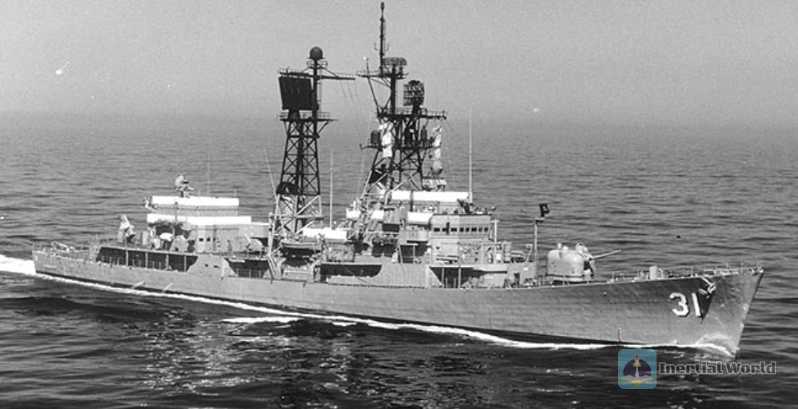
Despite protective measures, the "Dequette" self-defense test ship was still injured during the test in May 1999. After that, the US Navy carried out large-scale repairs on it and re-entered service after the sea trial in August 1999. Although it has been modified, the USS Decatur is still a very old ship. After evaluation, the US Navy believes that by the end of fiscal year 2004, the self-defense test ship will not be able to meet the actual test requirements. Therefore, the demand for subsequent self-defense test ships is proposed to meet these requirements. The US Navy designated the USS Paul Foster as the successor to the self-defense test ship. The USS Decatur self-defense test ship was not decommissioned in fiscal year 2004. As the next generation of self-defense test ships, the USS Paul Foster began to be used in fiscal year 2005.
After the ceremony of handing over to the US Bataan Naval Surface Warfare Center, the USS Paul Foster was modified in the shipyard. Although it was a combat ship that the US Navy had just retired, it had been modified several times during its service. Many combat systems required for the special self-defense test ship have been installed on board, such as the MK41 vertical launch system, but a number of more advanced systems and weapons still need to be installed. In addition, some facilities need to be dismantled. The ship was officially delivered to the US Navy Surface Warfare Center in fiscal year 2005. The ship has a "robust" all-electric configuration and a fairly large superstructure to accommodate the multi-function radar and SPS-48E radar that will be tested. There is also space on board to add some logistical support facilities.
The dedicated test and measurement platform can reduce the difficulty of equipment procurement scheduling, better control the installation and test schedule, and after the self-defense test ship is unmanned and remotely controlled, real tests can be carried out without worrying about the safety of the crew. The use of the self-defense test ship can identify possible problems before the system is installed on the ship. Problems can be found and corrected during the test rather than the finished product stage, which greatly saves costs. The self-defense test ship plays an important role in testing and evaluation before the introduction of sensors, weapons, combat systems, etc.
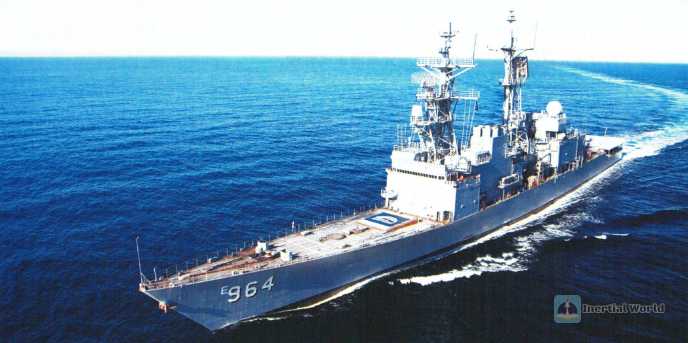
The systems installed on the US Navy’s "Decat" self-defense test ship include the MK57 NATO "Sea Sparrow" air defense missile system, the MK23 target acquisition system, the RAM missile AN/SLQ-32 (V) electronic support measures and close-range weapon system. "Paul In addition to installing the above systems, the Foster will also install all-electric units and renovate the superstructure to support the multi-function radar and SPS-48E three-coordinate air defense radar tests to be carried out later.
The self-defense test ship team was commended by the US Navy for its outstanding performance. The self-defense test ship is recognized by the US Navy as a cost-effective combat system and weapon system test platform. In a typical live-fire test, the self-defense test ship will be subject to various threats, and the test personnel will launch various attack weapons at the self-defense test ship. In response to these threats, the combat and weapon systems installed on the ship can be tested, and the shipborne systems can be evaluated accordingly. In fact, in the test, the actual target of the pre-attack was a bait barge located about 6 meters behind the unmanned self-defense test ship. The US Navy did this to protect the self-defense test ship and the facilities on it so that it could conduct multiple tests.
Conducting countermeasures against anti-ship cruise When testing missiles, it is necessary to integrate the test ship’s sensors and the combat subsystem of the combat system. Since the object of this test is a short-range air defense system, in order to safely and effectively conduct ship air defense tests under real threat conditions, a remote-controlled self-defense test ship must be used. Before conducting real tests, the U.S. Navy usually uses modeling and simulation methods to predict the interception probability (PRA) of various combat systems. The results obtained from the test of the self-defense test ship will be used to verify the accuracy of the prediction. The interception probability is an indicator of ship air defense. If this probability is too low, it means that the ship is easily hit by anti-ship cruise missiles.
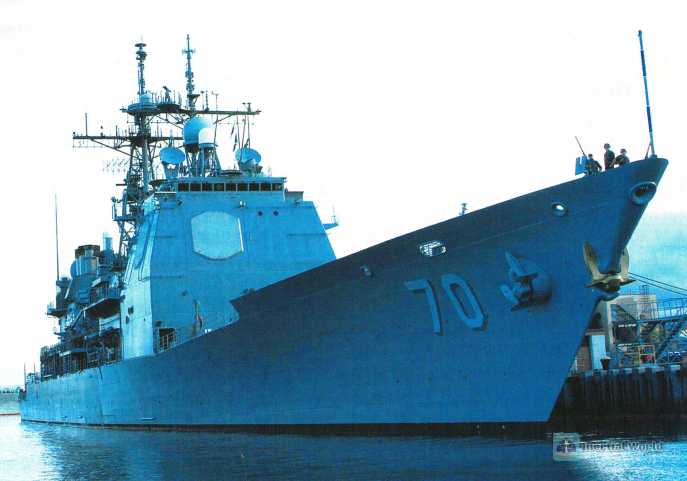
The systems that have been tested in the self-defense test include the "RAM" missile, the "Phalanx" close-range weapon system and the improved "Sea Sparrow" missile system. The self-defense test ship will test the LPD for the self-defense system of the MK2 ship in the future. 17. Combat systems of CVN76, CVN77, CVN(X), DD(X) and subsequent ship classes. The test and evaluation of the MK2 ship self-defense system also includes the helicopter-aircraft-surface warship mode test of the "RAM" missile.
The US missile defense system test ship "Lake Erie"
In a series of sea-based missile defense tests conducted by the United States in recent years, the "Lake Erie" is almost indispensable. On December 17, 2002, then-US President Bush ordered the deployment of a limited land-based missile defense system by 2004 and the deployment of a sea-based missile defense system starting in 2005 to prevent weapons of mass destruction from causing "catastrophic damage" to the United States, which indicates that the US Navy will accelerate the testing process in the future. Therefore, the "Lake Erie" will frequently appear in various media. USS Lake Erie (CG70) is the 24th Ticonderoga-class guided missile cruiser equipped with the Aegis system of the United States Navy. It is now the test ship of the US Navy’s theater-wide ballistic missile defense system. Its mission is to test and evaluate the ability to provide ballistic missile defense from the sea.
Lake Erie was started on March 6, 1990, launched on July 13, 1991, and commissioned on July 24, 1993. It was built by Bath Iron Works at a cost of about US$1 billion and its home port is Pearl Harbor, Hawaii. The Lake Erie is 173 meters long, 16.8 meters wide, has a displacement of 9,600 tons, a crew of 400, and is equipped with four General Dynamics LM2500 gas turbine engines. It has a speed of 30 knots (57 kilometers per hour). It is equipped with two SH-60 Seahawk helicopters, two M-220s that can launch Standard Missiles, Tomahawk cruise missiles and anti-submarine missiles. K-41 vertical launch system, MK-46 torpedo, "Fork" missile launcher, 2 MK-45 light artillery, etc.
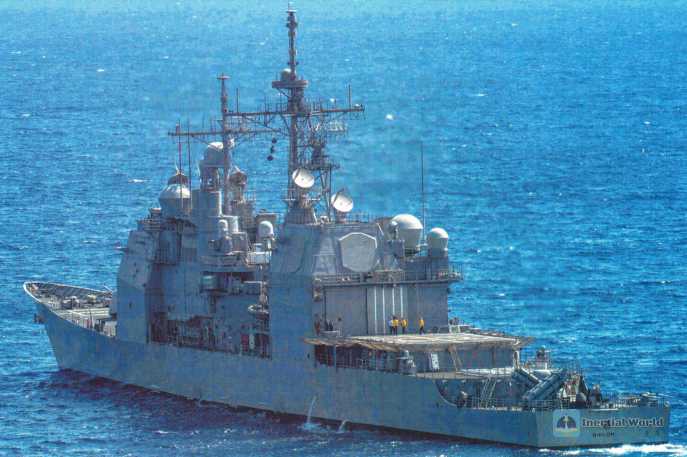
In August 1998, "Lake Erie" and another ship of the same class "Port Royal" (CG73) entered the factory for modification, mainly including the improvement of the "Aegis" weapon system and another major improvement, which is the "Linebacker" system (linebacker) that we often hear but are not familiar with now. The full name is the Navy’s "Linebacker" "Aegis" tactical ballistic missile system, which uses special computers and radar software and hardware to provide improved tracking and recording capabilities, with the ability to identify and track ballistic missiles, collect missile data and analyze and process, and then send relevant information to various combat locations. When it is combined with the "standard" SM-2IVA air defense missile, it can theoretically intercept tactical ballistic missiles (TBM). Developed by Lockheed Martin’s Naval Electronics and Reconnaissance Systems Division, the Line of Defense Supporter is a milestone step for the United States toward the initial naval regional ballistic missile defense capability. It is a major success for the U.S. Missile Defense Agency (MDA) and the Navy.
The modified Lake Erie and Port Royal then conducted tracking tests and exercises at the Pacific Missile Range Facility. In addition to verifying the Navy’s missile defense system, they also served as ships for developing combat orders and implementing training. These tests provided an opportunity to verify the target Aegis weapon system’s ability to deal with ballistic missiles and demonstrated how the improved system tracks and destroys tactical ballistic missiles. The purpose is to solve core theoretical and tactical problems for sea-based missile defense. At the same time, the two ships also serve as transitional application platforms for expanding the application of theater ballistic missile defense technology to other naval combat forces. The feedback from the test process directly affects the tactical design of air defense missiles and accelerates the improvement of missile guidance, propulsion and homing technology.
The first test was conducted between November 18 and 20, 1998. During the exercise, the cruisers Lake Erie and Port Royal successfully identified and tracked a target missile (a Beagle missile) and transmitted target information to the joint theater missile defense system.
But shortly afterwards, Lake Erie almost missed the missile defense test. The first launch of the new "Standard" SM-3 interceptor missile developed by the United States for the sea-based high-level theater missile defense system was not selected by Lake Erie. On September 24, 1999, the cruiser USS Shiloh (CG67) of the same class conducted the first Aegis Light Exoatmospheric Projectile (ALI) test, demonstrating the performance and reliability of the SM-3 missile during launch, the separation of the booster, and the guidance control and separation of the second stage. It was originally planned that all subsequent related tests would be completed by the USS Shiloh, but the further test schedule conflicted with the ship’s established combat plan, so the US Navy Chief of Operations Admiral Jeh Johnson decided that the USS Lake Erie, equipped with the "Line of Defense Supporter", would take on this task. On March 2, 2000, the USS Lake Erie was equipped with ALI improvement equipment, and the "Standard" S M-3 missiles were also installed on the "Lake Erie". From June 8 to 9, 2000, the Pacific Fleet conducted an exercise called "Pacific Blitz" off the west coast of Hawaii. The exercise demonstrated the Navy’s ability to collect orbital parameters of ballistic missiles using existing shipborne radars. The participating "Aegis" warships successfully exchanged ballistic missile data through the Joint Tactical Intelligence Distribution System (JTIDS) and link16 data link. As a test platform for the "Line of Defense Supporter", the "Lake Erie" also launched a "Standard" SM-3 missile to intercept ballistic missiles outside the atmosphere. On June 30, the "Lake Erie" and the "Port Royal" conducted another tracking test, with two targets The target missiles, including a TMT-3 missile and an Arctic Dog II rocket, followed the trajectory of the ballistic missiles and flew 160 nautical miles and 145 nautical miles at an altitude of 83 kilometers and 137 kilometers respectively from sea level. The "Lake Erie", "Port Royal" and "Constellation" aircraft carrier battle groups successfully tracked the target missiles, accurately calculated the data of the falling point, and realized the sending and receiving of information and data. With the success of a series of tests conducted in Hawaii. In July 2000, the U.S. Navy Operations Department announced that the "Lake Erie" guided missile cruiser was a naval ballistic missile defense test ship. It would no longer be deployed in combat in the next few years, but would be used for ALI interception flight tests.

Establishing a sea-based missile defense system is one of the goals that the US Missile Defense Agency and the Navy have been pursuing. Research by US experts shows that there are 37 types of tactical ballistic missiles that may be used by countries around the world to attack the United States, and 26 of them are cross-sea flights, and most of these missiles are within the combat range of the US Navy’s shipborne early warning system. Therefore, the United States decided to incorporate ships equipped with the "Aegis" combat system into the missile defense system, that is, to deploy surface ships carrying the "Aegis" weapon system in the designated sea area to intercept cross-sea tactical ballistic missiles that attack the US mainland. This can not only utilize existing resources to save costs, but also greatly expand the combat space of the US mainland to defend against incoming missiles. According to the Bush administration’s plan, the United States will deploy 20 sea-based interceptor missiles on existing "Aegis" ships by 2005 to intercept enemy missiles within the first few minutes of launch (in the boost and ascent phases). The success or failure of this plan depends largely on the "Lake Erie".
After the USS Lake Erie was designated as a missile defense test ship for the US Navy, more critical "live-fire" tests began. In January 2001, the USS Lake Erie conducted the first Aegis Light Exoatmospheric Projectile intercept flight test at the Pacific Missile Range, launching a Standard SM-3 missile, demonstrating the stability of the third stage of flight and the control of the fourth stage separation of the kinetic warhead.
The "Standard" SM-3 missile is specially developed to deal with the threat of theater ballistic missiles from outer space. It consists of a two-stage booster rocket of the "Standard" SM-2VA missile, a double-pulse third-stage rocket engine and an exoatmospheric light projectile. It adopts a direct collision kill method, with a maximum speed of 4.5 kilometers per second. It can intercept theater ballistic missiles with a range of 600 to 3,500 kilometers. The minimum interception altitude is 80 kilometers, the maximum interception altitude is about 500 kilometers, and the maximum interception distance is 1,200 kilometers.
On January 25, 2002, the Missile Defense Agency and the Navy successfully conducted a flight test of the sea-based mid-course ballistic missile defense system. First, an Aries short-range missile was launched from Hawaii, and then the USS Lake Erie, anchored hundreds of kilometers off the coast, tracked the target with an AN/SPY-IB(V) phased array radar and launched a Standard SM-3 missile, which was successfully intercepted over the Pacific Ocean about 500 meters northwest of Hawaii. Although the US military claimed that the purpose of the test was to collect data rather than intercept, the successful interception undoubtedly boosted the confidence of the US military. On the evening of June 13, just as the United States officially withdrew from the 1972 Anti-Ballistic Missile Treaty, the USS Lake Erie launched another Standard 5M-3 missile in the waters of Hawaii and successfully hit a target ballistic missile launched from Kauai Island 8 minutes ago. The above two tests were conducted when the ballistic missile (target missile) was already in the descending flight phase. Immediately afterwards, on November 21, a standard SM-3 missile launched by the Lake Erie shot down a modified single-stage Minuteman ballistic missile launched from the Kauai test range. This was the first time that the Lake Erie conducted an interception test of a medium- and short-range ballistic missile in the ascending phase. Pentagon officials said that this test was the first of six series of tests to accelerate the development of the sea-based missile defense system.
From this point of view, the Lake Erie will also conduct a series of interception tests in the future in order to obtain mature interception technology. According to the plan, it will mainly complete further interception tests of light exoatmospheric projectiles, the integration of the Standard SM-3 missile and the Aegis cruiser, and determine the key technologies and tactics of the sea-based ballistic missile defense system. The Lake Erie has a heavy responsibility on its shoulders, and it is not easy at all.
At present, the US Navy is still using the "Lake Erie" to conduct "Aegis" Light Exoatmospheric Launch (LEAP) interception tests, SM-3 "Standard Missile" tests, Navy Theater-level (NTW) missile experiments and Theater Ballistic Missile Defense (TBMD) tests. According to incomplete statistics, the ship has participated in more than 10 interception missile exercises in the past 6 years.
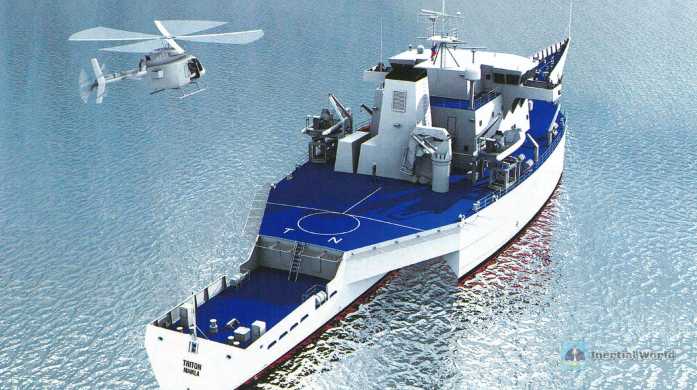
British "Poseidon" trimaran test ship
The "Poseidon" trimaran test ship is a technology demonstration/test ship developed to meet the requirements of the British Royal Navy’s "Future Surface Warship" (FCS). The "Future Surface Warship" was originally planned to enter service in 2013 and replace the Type 23 "Duke" class missile frigate. Although the project failed in the end, as the first trimaran test ship, the Poseidon test ship can be said to be a pioneer and a guide for the research and testing of trimarans in the United States and other countries.
The Poseidon trimaran test ship is the world’s first and the largest trimaran suitable for ocean voyages at that time. The Poseidon is only 2/3 of the planned trimaran, but it can be accurately scaled up to a full-size warship for the final test.
Development history
In August 1998, the British Ministry of Defense awarded a contract to Vosper Thornycroft to build a trimaran, known as the RV (research vessel) Poseidon. The main purpose of the test plan is to study and determine the seaworthiness of the trimaran structure hull line. It was launched in March 2000 and handed over to the Defense Evaluation and Research Agency at the end of August.
A series of tests began in October 2000, with the first phase of the tests being directed to check and verify the ship’s structural performance. In August 2001, Poseidon successfully completed a series of landing and take-off tests using a British Navy Lynx MK8 helicopter. In September 2002, the Lynx MK8 helicopter successfully completed the Replenishment Underway (RAS), structural load and seaworthiness tests. It was successfully confirmed that the trimaran design is completely equivalent to a single hull ship and can be operated in exactly the same way. During its use, Poseidon was used as a normal test ship for a certain range of military and commercial purposes. Poseidon can be used as a test bed for naval systems to a certain extent, including sonobuoys, small towed underwater systems, electronic warfare and development of signal control technology. Interestingly, after the launch of Poseidon, it also participated in a series of scientific test activities. In September 2003, it was used in the QinetiQ1 project to break the world altitude record for a manned balloon. The plan guides a huge ammonia-filled balloon to reach a target altitude of 132,000 feet, filling an area of 9 acres and being as tall as the Empire State Building when inflated. The first attempt failed due to an 8-meter-long crack in the ammonia-filled balloon after the test began. The next attempt is scheduled for 2005.
Advantages and Applications
The trimaran hull line is expected to gain some advantages over the traditional single hull: reduced cost, reduced various signatures, and importantly, reduced acceleration resistance; increased length, giving more stability; more space on the upper deck, which can be used for the flight deck and equipped with hangars for helicopters and additional equipment, and in the future, it can also be equipped with carrier-based armed helicopters. The 90-meter-long trimaran structure demonstrates that the hull shell and rigid reinforced longitudinals of the ship meet the structural constraints. The main hull and bridge deck are steel structures.
A comprehensive ballast system adaptation test is carried out under different operating conditions. The hull structure of the "Poseidon" will carry "container-type" test equipment. The flight deck is strong enough to accommodate a Lynx helicopter and can operate unmanned aerial vehicles. The current driving force behind the development of trimarans is to apply it to frigate-sized ships. The size of the Poseidon trimaran test ship, which has been built and launched, is two-thirds the size of a future full-scale frigate. Concept studies for other missions have been conducted, including for coastal patrol. Concept studies for future ship development are also being conducted. For example, the development and design of a small helicopter platform landing ship (MiniLPH), a rapid deployment support ship, and a large stealth ship equipped with carrier-based aircraft with aviation combat capabilities.
British Triton power system
The propulsion system is generated by two 2 Paxman12 VP185 2MW diesel generators, driving two 350kW electric side thrusters and a single main propeller. The remanufactured fixed-pitch propeller uses composite materials. The five-blade composite propeller is 2.9 meters in diameter, allowing thicker blades to reduce vibration and acoustic signature without increasing weight. Dowty Propellers processes the blades and Watrsila Propulsion Technologies manufactures the nickel-aluminum bronze hub.
The future electric propulsion system is currently under study, including AC permanent magnet main motor equipment, a battery/fuel cell compartment, flight deck, gas turbine and AC generator set. It will also be equipped with an integrated technology rod. In order to further improve the stealth of the ship, various measures are adopted, such as the method of reducing the heat signature of the engine exhaust between the hull, and commercial off-the-shelf materials and services are also used to achieve low chatter and reduce radar signature.
Navigation, communication and test instrumentation system
The navigation suite of the Poseidon uses ARPA (Automatic Radar Plotting Automatic Intelligent Data System) including Northrop Grumman’s Sperry Ship Signal Bridgemaster ES-band and X-band planar grid radar. It is equipped with two Northrop Grumman (Litton) LMX400GPS receivers: Furuno Long Range Navigation System (Loran)-C receiver, Northrop Grumman electronic chart system and Captain GDS101 echo sounder. The satellite communication system includes Northrop Grumman (Litton) Inmarsat-C, Inmarsat-M and Neralnmarsat-B. It is also equipped with a Doppler rangefinder, fax communication weather receiving device, modem and fax equipment. It is worth noting that it will also be equipped with a very advanced "A PAR" active phased array radar system jointly developed by the Netherlands, Germany and Canada, with a detection range of 150 kilometers and a horizontal search range of 75 kilometers. Its functions include horizon search, sea surface and air search, and it can track 250 targets at the same time.
Specifications
Approximate data of the British trimaran "Poseidon", total length: 95 meters; waterline length: 90 meters; side hull waterline length: 34 meters; ship width: 20 meters; main hull width: 6 meters; side hull width: 1 meter; maximum draft: 3 meters; displacement: 800 tons; endurance: 20 days (3000 nautical miles) at 12 knots; maximum speed: 20 knots; propulsion method: diesel engine electric propulsion single-axis fixed-pitch propeller together with independent side hull propeller, with It has very high operational flexibility; power supply: three specifications, namely 440V/60H2, 230V/60Hz, 115V/60Hz; safe working load of deck machinery crane: 1200 kg at 8 meters lifting height and 4000 kg at 4 meters lifting height; auxiliary vessels: 7.3 meters long work boat, "Pacific" steel hull inflatable rubber boat (RIB) and MSA lifeboat; the British "Poseidon" has a total of 12 personnel, and there are 12 scientists on board for research and experimental work.
In order to study the development prospects of the trimaran hull line of the "Poseidon" for large "future surface ships", the US Department of Defense and the British Ministry of Defense reached an agreement to cooperate for 18 months during the sea trial of the "Poseidon". The data acquisition sensors and computer systems on board to evaluate its performance are provided by the United States. There are two laboratories on the British "Poseidon" experimental ship. One laboratory cabin is equipped with the US Navy’s Test Instrumentation System (TIS) to collect data, including wind speed and direction, temperature, wave height, hull motion, steering gear, cabin control, navigation and environment. The TIS system can record more than 400 sets of data channels at 20HZ, 200Hz or 2,000Hz sampling parameters. All data time stamps come from a global positioning system time synchronization signal. TIS sensors include: Miros WAVEX wave height radar, TSK wave height radar, Trimble AGPS system, AGI wind speed and environmental monitoring system. Another laboratory cabin is used for general experimental purposes. It should be said that the US military later used trimaran technology in the design and construction of littoral combat ships, which is not unrelated to the joint research on the "Poseidon" with the United Kingdom.
However, the British Navy did not usher in the day when the third phase of the "Poseidon" test plan was launched. The "Poseidon" test ship was soon considered to lack prospects and funds and was discontinued. In 2005, the ship was sold to Gardline Marine Sciences in Great Yarmouth, Norfolk, and installed with oceanographic measurement equipment, intending to carry out oceanographic measurement work, but ultimately failed. After that, in 2006, the "Poseidon" was sold to the Australian Customs and Border Protection Agency, intending to be used for naval patrol missions in the northern waters of Australia, and installed with two .50 caliber machine guns. The ship arrived from the UK in mid-January 2007 and immediately began operations. Soon after, the ship was returned to the UK, and as of 2017, the ship was placed in the wind turbine blade field of Siemens in the UK.

The Italian "Dragon" test ship
The "Dragon" missile frigate is a test ship converted by the Italian Navy after the "Aster" 15 ship-to-air missile was introduced from France. It was originally a "Mountain Infantry" class frigate with a full load displacement of 2,700 tons.
The "Dragon", which was commissioned as an anti-submarine frigate in 1968, has been used as a test ship of the Italian Navy since 1993 to identify the EMPAR phased array multi-function radar and the "Milas" underwater missile. In October 2000, the ship completed an extensive, 15-month overhaul: 8 SYLVER A43 vertical launch systems (VLS) were installed just behind the 76mm single-barrel bow gun; the communication system was improved; the bridge was reinforced with armor plates to withstand the impact of missile launches; the variable depth sonar winch at the stern was updated and the power plant was overhauled. From the appearance, the B gun position behind the 76mm naval gun on the main deck was converted into a platform for the ship-to-air missile launcher, and the "ball" on the lattice mast in front of the flight deck. It is the SPY790 radar system antenna of the "Aster" ship-to-air missile.
After completing the identification test, the Italian Navy received the EMPAR radar in May 1998 and selected it as the surveillance, target acquisition and missile guidance radar for SAAM/IT and PAAMS. The radar has been integrated with the AGIS command and control system of the Dragoon test ship and the uplink transmitter of the SAAM/IT. Subsequently, the Fire Control Unit (FCU) of the SAAM/IT has been extensively tested, including simulated missile launches and verification of the missile uplink functionality (using a helicopter carrying an Aster-15 missile receiver).
After the improvement of the AGIS system (focused on the MARA computer), the SAAM/IT FCU has been accepted by the Italian Navy. Since September 2001, the final verification of SAAM/IT has been carried out by the Dragoon at the missile range of the Mediterranean Test Center (CEM) in France, using live ammunition from the Aster-15. The Dragoon ship was deployed here for sensor calibration and familiarization with the test rules. The successful completion of this test allows the Italian Navy to finalize the general structure of SAAM/IT in accordance with the second phase of the FSAF contract. The product can then be installed on the aircraft carrier "Nova Unita Maggiore".
After the completion of the SA Following the AM/IT qualification program, HMS Dragoon underwent a further 10 months of overhaul and modification to allow for PAAMS qualification trials, including full system qualification with the French and Italian navies and qualification of "common core" components (such as command and control software, computers and consoles) with the Royal Navy.
PAAMS’s Fire Control System (FCS) development began in mid-2002 at Pratica di Roma near Rome. Mare ground test site. The FCS was then transported to CESDA (Air Defense Systems Test and Research Center) near Toulon for final tests by June 2003. It was then equipped on board the "Dragon" ship for qualification firing tests from late 2003 to early 2004. Finally, it was integrated with the combat management system of the "Horizon" frigate. This was the last step in the full engineering development phase of the PAAMS project. Initial production of the FCS then took place for the French and Italian lead ships, with deliveries in May and August 2004 respectively.
Dragon also played an important role in the qualification of the French/Italian SLAT soft-kill anti-torpedo system, a test program that began in 2002. For the test SLAT, it has the inherent quietness advantage of being designed as an anti-submarine warfare platform.
Since the French Navy test ship "Oleron" was retired in 2001, the Italian Navy used the test ship converted from the "Dragon" frigate to verify two missile systems: one is the surface-to-air anti-missile/Italian (SAAM/IT) point defense missile system; the other is the French-Italian modification of the main air defense missile system (PAAMS) for the "New Horizon" air defense frigate.

Japanese "Asuka" test ship
The "Asuka" test ship is a large ship electrical test ship under the Japan Maritime Self-Defense Force. The Asuka test ship is mainly used to test the Type 00 fire control device type 3 (FCS-3 phased array radar system), vertical launch short-range air defense missiles, ATECS advanced combat system and new OQQ-21 low-frequency sonar system developed by the Japanese Maritime Self-Defense Force for the new generation of main battleships. These equipment will be used in the new generation of main battleships such as the "Hyuga" class helicopter destroyer and the "Akizuki" class destroyer launched by the Japanese Maritime Self-Defense Force in the early 21st century.
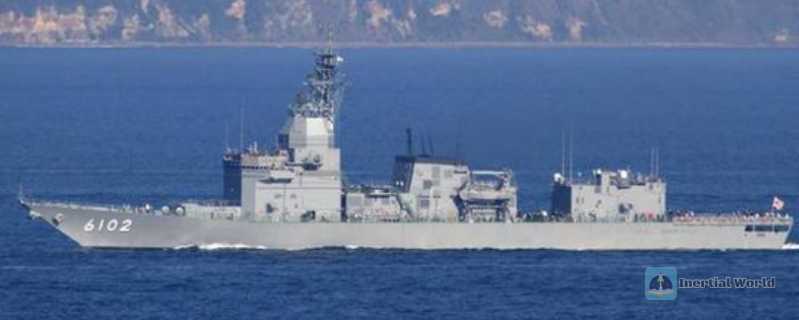
The Japanese Maritime Self-Defense Force has always claimed to be well-equipped and highly modernized, so it attaches great importance to the basic research of high-tech. Therefore, the development guidance team under the Maritime Self-Defense Force Self-Defense Fleet Command has a professional experimental ship as a research and development test platform for new equipment, which can allow the new equipment to be fully corrected and improved in long-term actual testing without calling combat-ready ships to serve as platforms. The first professional experimental ship of the Japanese Maritime Self-Defense Force was the "Kurihama" (ASE-6101), which was commissioned in 1980. It has a displacement of about 1,000 tons and adopts a bow configuration similar to that of a minesweeper or survey ship. It is mainly used to test underwater equipment such as sonar, anti-submarine weapons, etc. The test equipment is put into the water by a telescopic arm at the stern.
Due to the insufficient tonnage of the "Kurihama", it cannot adapt to the development of modernization and carry large equipment suitable for the new generation of front-line combat ships, and there is no systematic integrated configuration design. Therefore, the Japanese Maritime Self-Defense Force allocated a budget in 1993 to build a new generation of test ships for front-line combat ship equipment. Since the naming of the Maritime Self-Defense Force experimental ships is based on "place names related to civilization and culture" in Japan, the new generation of test ships is named after Nara Asuka, a prosperous place in the "Asuka" era when the centralized emperor system was formally formed in Japanese history. The ship was entrusted to Sumitomo Heavy Industries Uraga Shipbuilding, and the construction started on April 21, 1993, launched on June 21, 1994, and officially entered service on March 22, 1995.
The ship type of "Asuka" is very different from that of "Kurihama", with a full load displacement of up to 6,200 tons and an overall configuration similar to that of a destroyer. It is mainly used to test the new ship electric weapons developed by the Japanese Maritime Self-Defense Force for the next generation of main battle ships. These equipment will be used on the new generation of main battle ships such as the "Hyuga" class helicopter destroyer and the "Akizuki" class destroyer launched by the Japanese Maritime Self-Defense Force in the early 21st century. The four antennas of the most important FCS-3 phased array radar are concentrated in the tower structure behind the bridge, and the deck in front of the bridge can be equipped with 16 vertical launch systems to test advanced short-range air defense missiles such as the American Sea Sparrow ESSM or Japanese AHRIM that are paired with FCS-3. The "Asuka" has space to install various test equipment, and is equipped with a complete evaluation laboratory. The living environment of the ship’s personnel is also very comfortable. In order to prevent the test equipment on board from being too heavy and affecting the stability of the ship, the "Asuka" is also equipped with a large ballast tank that can adjust the center of gravity of the ship according to the weight of the equipment on board.
In terms of propulsion system, the "Asuka" has also been used to test the compound gas turbine electric and gas turbine (COG:LAG). The main engine includes two LM-2500 gas turbines produced by Ishikawajima-Harima Heavy Industries of Japan under the authorization of GE of the United States, which can be connected to the main shaft with a traditional reduction gearbox (the maximum speed at this time is 27 knots). In addition, there is another LM-2500 gas turbine unit connected to the generator to generate electricity to drive two electric motors to drive the propellers. Therefore, the early "Flying Bird" had two propulsion modes that could be switched. When the gas turbine drives the reduction gear for direct propulsion, the maximum speed of the "Flying Bird" is 27 knots; when the main shaft is driven by the gas turbine power system, the electric motor directly drives the propeller without going through the reduction gear. After completing the electric propulsion test, the "Flying Bird" removed the LM-2500 gas turbine generator and propulsion motor, leaving only two LM-2500 gas turbine main engines directly driven by reduction gears.

The "Asuka" has a helicopter hangar and flight deck at the stern, which can operate a SH-60J/K anti-submarine helicopter of the Japan Maritime Self-Defense Force. Although the tonnage of the "Asuka" is more than five times that of the "Kurihama", due to its extremely high degree of automation, the number of personnel is only slightly increased compared to the "Kurihama", reaching 70 crew members.


